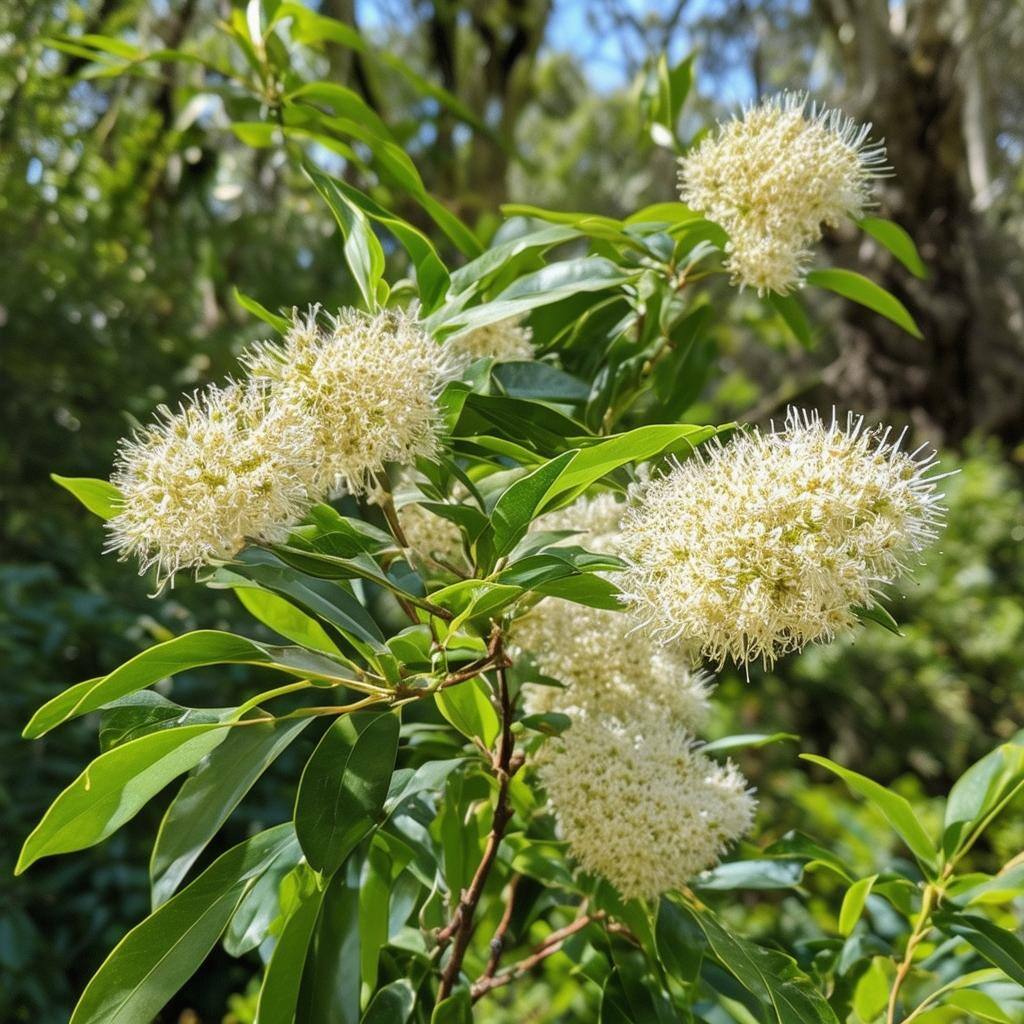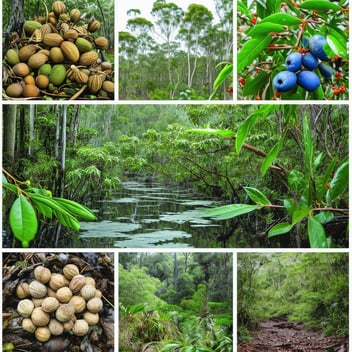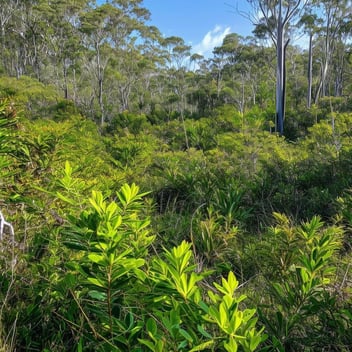Lemon Myrtle and Tea Tree: Iconic Australian Medicinal Plants
Introduction
Australia's rich botanical heritage boasts numerous plants with remarkable medicinal properties. Among these, lemon myrtle (Backhousia citriodora) and tea tree (Melaleuca alternifolia) stand out as iconic species, celebrated for their therapeutic benefits and cultural significance. This article delves into the unique characteristics, traditional uses, and modern applications of these two extraordinary plants.
1. Botanical Profiles
Lemon Myrtle (Backhousia citriodora)
Lemon myrtle is a subtropical rainforest tree native to Queensland, Australia. It is renowned for its glossy, lance-shaped leaves that exude a potent lemon fragrance, attributed to its high citral content. The tree produces creamy-white, star-shaped flowers, adding to its ornamental appeal.
Tea Tree (Melaleuca alternifolia)
Tea tree is indigenous to the swampy coastal areas of New South Wales and Queensland. This small tree features papery bark and narrow, aromatic leaves. During its blooming season, tea tree displays fluffy, white or cream-colored flowers arranged in spikes, contributing to its distinctive appearance.
2. Traditional Uses by Indigenous Australians
Lemon Myrtle
Indigenous Australians have long utilized lemon myrtle for its medicinal properties. The leaves were traditionally infused to treat sore throats, coughs, and gastrointestinal ailments. Additionally, its pleasant aroma made it a popular choice for flavoring foods and beverages.
Tea Tree
The Bundjalung people of eastern Australia employed tea tree leaves in various medicinal preparations. They inhaled the vapors from crushed leaves to alleviate respiratory issues and applied poultices to wounds and skin infections, capitalizing on the plant's antiseptic qualities.
3. Extraction and Composition of Essential Oils
Lemon Myrtle Oil
The essential oil extracted from lemon myrtle leaves contains up to 98% citral, making it one of the richest known sources of this compound. Citral is recognized for its potent antimicrobial and anti-inflammatory properties, contributing to the oil's therapeutic efficacy.
Tea Tree Oil
Tea tree oil is characterized by a complex composition, including terpinen-4-ol, which is primarily responsible for its antimicrobial activity. The oil also contains other terpenes that enhance its antiseptic and anti-inflammatory effects.
4. Contemporary Medicinal Applications
Lemon Myrtle
In modern herbal medicine, lemon myrtle is utilized for its antimicrobial, anti-inflammatory, and antioxidant properties. It is incorporated into topical formulations to address skin conditions and is also consumed as a tea to support immune function and digestive health.
Tea Tree
Tea tree oil has gained international recognition for its broad-spectrum antimicrobial activity. It is commonly used in over-the-counter products aimed at treating acne, fungal infections, and dandruff. Additionally, it serves as a natural antiseptic in various personal care items.
5. Cultivation and Sustainability
Lemon Myrtle
Cultivating lemon myrtle requires a subtropical climate with well-drained, nutrient-rich soil. The plant thrives in full sun and benefits from regular pruning to promote dense foliage growth. Sustainable farming practices ensure a steady supply of leaves for essential oil extraction without compromising wild populations.
Tea Tree
Tea tree cultivation is concentrated in regions that mimic its native habitat—wet, low-lying areas with abundant sunlight. Sustainable harvesting practices are essential to maintain ecological balance and ensure the continued availability of this valuable resource.
6. Safety and Precautions
Lemon Myrtle
While lemon myrtle is generally considered safe for culinary and topical use, its concentrated essential oil should be diluted appropriately to prevent skin irritation. Individuals with sensitive skin should perform a patch test before widespread application.
Tea Tree
Tea tree oil is intended for topical use only and should never be ingested, as it can be toxic when swallowed. Dilution is crucial to avoid skin irritation, and users should be aware of potential allergic reactions. Consultation with a healthcare professional is advisable before using tea tree oil, especially for individuals with pre-existing skin conditions.
7. Economic and Cultural Significance
Lemon Myrtle
Beyond its medicinal applications, lemon myrtle has become a staple in the culinary industry, flavoring a variety of foods and beverages. Its economic value extends to tourism, with plantations offering educational tours and products that celebrate this unique Australian flora.
Tea Tree
Tea tree oil production contributes significantly to the Australian economy, with the country being the primary global supplier. The oil's inclusion in a wide range of health and beauty products underscores its cultural and commercial importance.
Conclusion
Lemon myrtle and tea tree exemplify Australia's rich tradition of utilizing native plants for medicinal purposes. Their enduring significance, from traditional Indigenous practices to contemporary applications, highlights the profound connection between Australia's natural heritage and its cultural identity. As research continues to uncover the full potential of these plants, they remain integral to both the nation's biodiversity and its contributions to natural medicine.




